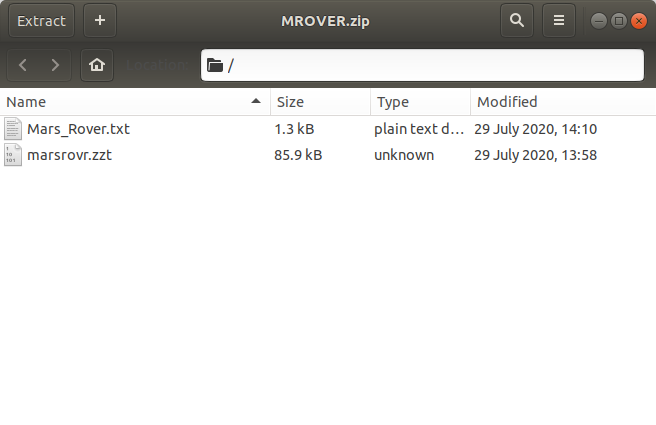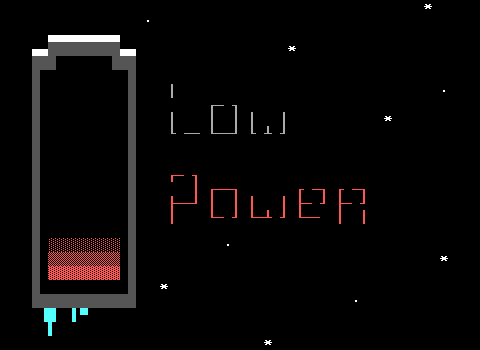Perhaps you followed along with The Joy of ZZT YouTube series. Maybe you're making a triumphant return to ZZT after a decade or more of being absent. The point is, you've got yourself a ZZT world, it's been properly tested (please), and now the only left to do is share it with everyone so they can play your game, story, or whatever it is you've created. Where do you publish ZZT games? How are people supposed to find? Are the only people who will see your creation people who constantly type aligned with a second "l" because they've been ZZTing for so long?
Well, I hope not. Since the launch of the Museum of ZZT in 2015, there's certainly been a resurgence. We've gone from years with no more than five releases, to a recent Blitzkrieg ZZT contest with a 90 minute time limit to create a game resulting in 11 new games. With a combination of Kevin Vance's KevEdit, and Asie's masterful work on the Zeta emulator, ZZT is more accessible today than it was a decade ago. With these tools, I believe that ZZT should be a serious consideration for any independent game's developer working on something with a simple enough premise. (And perhaps for the more daring, using Asie's Reconstruction of ZZT to modify the engine itself.)
While the Museum is a great site to publish ZZT worlds to, its focuses can be less than ideal from the perspective of somebody who wants to show off their game. With the Museum, you're looking at a site that is most frequently used by those who have participated in the ZZT community, past and present. The kind of people who are already quite familiar with ZZT. There's some convenience in solely targeting that group (you don't have to tell people using the Museum as a source for ZZT games how to play a ZZT game or how to use the cheat prompt or explain what "?+I" means.
In short, if someone is looking for a fun new RPG to play that isn't necessarily a ZZT RPG, they're probably not going to find the Museum or your game. Most people don't stumble across something like For Elise. It's a game played by those already aware of ZZT. Luckily, we have Itch.io as a far more favorable solution. For now though, let's learn how to get something on the Museum!
Publishing to the Museum of ZZT
The Museum's goal is to be a public archive of as many ZZT worlds as possible, so even if you intend to publish your world elsewhere it is highly recommended to provide a copy to the Museum yourself!
Step 1: Prepare your zip file
Uploads to the Museum of ZZT are zipped. Back in the 90s this had the considerable benefit of keeping file sizes down in an era where web hosting offered limited space and where downloading files meant faster download times. Today it's mostly just to be able to more easily group files together as one download. When you create your zip be sure to include the following:
- ZZT files - Obviously.
- Documentation - Though not technically required, a simple text file listing information about the file can be useful. Since ZZT worlds typically all live in the same directory, avoid common names like "readme.txt" and consider naming any text files after your world instead.
- Custom fonts, custom palettes, external data files - pretty much anything else needed to run your world as intended.
- Custom executables - It is assumed that all files on the Museum are compatible with ZZT v3.2. If your world requires a modified ZZT it should be included.
- Development files - While not the focus of your release, being able to see snapshots of the world as it was being developed can be pretty cool. It might be best to put these in a folder to avoid confusion over what file should be loaded in ZZT and to avoid cluttering people's ZZT folders
Additionally, make sure your zip files do not include the following:
- Official versions of ZZT - The Museum is an archive of ZZT worlds. Those interested in playing them should download ZZT separately as it's necessary for nearly everything on the site.
- Zeta - Similarly, Zeta is also expected to be downloaded already by anybody making use of the Museum's files.

In most cases, your zip will end up just being two files like this one, the world and the documentation.
Step 2: Upload your zip file
Head to the upload page and fill out the form! The form itself goes into the details, but it's pretty much just filling out the basic information for the database: title, author, company, genres, and release date. There is a 1 megabyte size limit on uploads. For some ZZT files and a text file this is plenty, but if you're uploading a utility, modified executable, or something with its own soundtrack, it's a lot easier to hit this barrier. If you need to upload a larger world, contact me about a manual upload.
Step 3: Wait patiently
Once your file has been uploaded, it will be placed in the upload queue. The upload queue exists as a buffer between "here's a zip file some stranger gave me" and "this zip file contains a ZZT world to play". Anything in the queue is eventually either published and joins the rank of all the other hosted files, or is removed entirely if it's something not intended for the Museum. While you're waiting for publication however, anyone may still download, (attempt to) play online, or browse the contents of your uploaded zip file.


